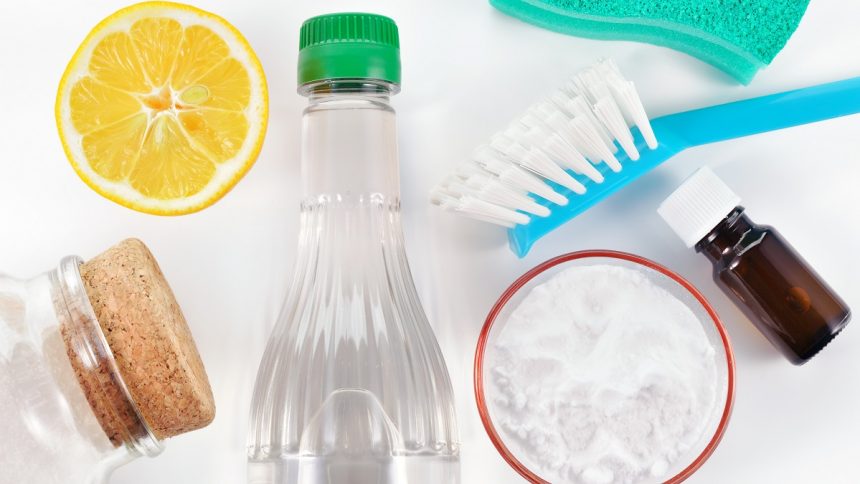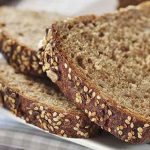The iconic fictional British secret service agent, James Bond, prefers his martinis shaken, not stirred.
Garnished with a lemon twist, you, too, can indulge in your own guilty pleasure – but, not as a beverage. Rather, you can clean your entire home with ingredients you likely already have in your kitchen – and, yes, even your bar.
The 10 nontoxic DIY cleaning recipes we’ll cover shortly are easy to create. But, before you get down to DIY business, as any spy would agree, you’ll need to be debriefed on some essential background facts about the enemy.
Traditional Toxic Cleaning Products
Fact: A study carried out in the U.S. estimated that Americans spend approximately 90% of their time indoors where levels of pollutants can be up to 5 times worse than outside. Fact: According to a study published in the Journal of Environmental Technology, the average home contains 400 chemicals.
Hidden Toxins: For Your Eyes Only
The majority of conventional household cleaning brands contain a host of toxic chemicals. Why not make your own DIY nontoxic cleaning mixtures instead? But, the toxic buck doesn’t stop there. It turns out we have a few moles within the cleaning products industry.
With lax legislation on testing and labeling, it’s no wonder so many of these suspects have gone undetected for so long. Federal law exempts manufacturers from complete labeling of their ingredients as they are protected by their “trade secrets.”
But, that’s not the only sleeper assassin we need to be concerned with. The majority of conventional household cleaning brands contain a host of toxic chemicals including butyl cellosolve, glycol ether, aldehydes, ammonia, chlorine, nonylphenol ethoxylates (NPEs), triclosan, phthalates, 1,4 dioxane, petroleum distillates, caustics, DEA, TEA, hydrochloric acid, petroleum-derived surfactants, formaldehyde, sodium hydroxide, and sulfuric acid; all of which have detrimental effects on your health and the planet.
Did You Know?
The Environmental Working Group’s 2009 state-of-the-art air pollution study turned up a wide range of air contaminants linked to asthma, cancer, reproductive toxicity, hormone disruption, and neurotoxicity. Some of the worst offenders in the organization’s Guide to Cleaners and Health include: Comet Disinfectant Cleanser Powder emitted 146 different chemicals. The most toxic chemicals detected – formaldehyde, benzene, chloroform, and toluene – were not listed on the label. Febreze Air Effects released 89 air contaminants.
How can you protect yourself?
While a green term or leaf is no indication of safety, there are trusted brands that walk the talk, like my personal fave Ecos (formerly Earth Friendly Products). Their products are made from plants, 100% biodegradable, and recognized as a Safer Choice Formulator by the EPA. For many other brands, however, you’ll need to rely on – not Geiger counters or Lektor decoders – but your own two eyes to decipher labels.
10 Nontoxic DIY Cleaning Recipes
1. Soft Scrub Add enough dishwashing liquid (dye-free, fragrance-free if possible) to ½ cup baking soda. Stir until it forms a paste. Perfect for tubs, tiles, and toilets.
2. Fabric Softener Pour ¼ cup white vinegar into the final rinse cycle. Note: Do not use vinegar if you use bleach (which you shouldn’t anyway).
3. Glass Cleaner Add ¼ teaspoon of natural dishwashing liquid and 3 tablespoons of white distilled vinegar or inexpensive vodka to 2 cups of water in a spray bottle. Due to its 50% ethanol alcohol concentration, vodka is a natural disinfectant that can cut through grease and stains (it also makes a great window cleaner). Add a twist of lemon for a fresh scent with antibacterial and antiseptic properties. Just shake, spray, and dry. Recycle old newspapers to dry for a streak-free shine. Caution: Wear gloves when using newspaper so you do not stain your hands.
4. All-Purpose Cleaner Combine ½ teaspoon washing soda, a dab of natural liquid soap, and 2 cups hot water in a spray bottle, and then shake.
5. Furniture Polish Mix ½ teaspoon oil, such as olive or jojoba, with ¼ cup white vinegar or lemon juice in a glass jar. Dab solution with a cloth and wipe wood surfaces.
6. Disinfectant Add 1 teaspoon of essential oil, such as clove or tea tree, to 2 cups of water in a spray bottle; or add 20 drops of grapefruit seed extract to 1 quart of water.
7. Oven Cleaner Sprinkle baking soda over the bottom of the oven. Spray with water. Let sit for 8 hours and then scrub and rinse clean.
8. Drain Cleaner To open clogs, pour ½ cup baking soda down the drain, then pour ½ cup white vinegar and cover the drain. Caution: Do not use this method after trying a commercial drain opener.
9. Silver Polish Use a natural toothpaste; preferably one without baking soda so it will not scratch your silver. Just rub, rinse, and dry!
10. Wood Floors ¼ cup. olive oil or jojoba oil (wood preserving) 1/3 cup. white vinegar (antibacterial) 12 drops lemon essential oil 5 cups hot water Combine all ingredients in a deep bowl. Grab a mop or a cloth rag, and start polishing. You’ll want to make sure you spread the mixture nice and thin and leave time for the wood to dry thoroughly. If the floor is too slick after polishing, wipe with a dry cloth to soak up any remaining oil.
Avoid the toxic health effects and planetary pollution caused by some commercial cleaners. Instead, enjoy making your own healthy DIY cleaning products to keep your home clean and your family safe.
Editor’s Note: This article was originally published on March 7, 2016 and updated in June 2024.






